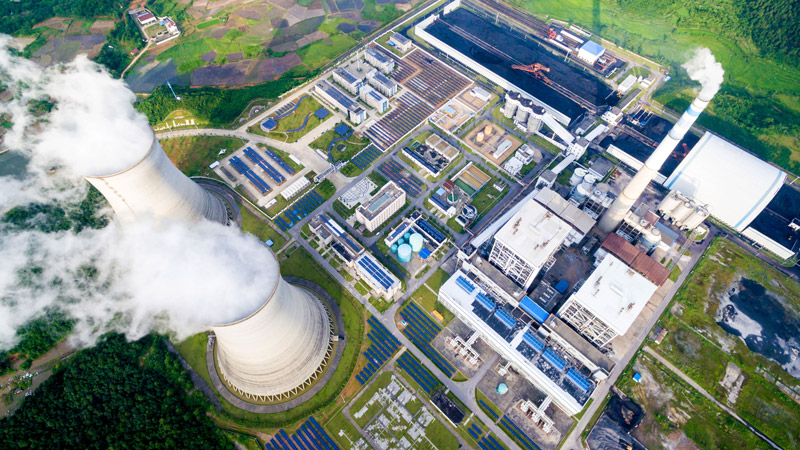World energy production is at its highest ever. Total energy consumption around the world has more than doubled in the last 40 years and is expected to increase even further, up to 30 % by 2030. Whatʼs worse, the use of fossil fuels, while declining, still accounts for 81 % of global energy production.
But reducing energy use, and being more energy-efficient, is one of the surest ways of reducing greenhouse gas emissions, and thus halting the rise in the earthʼs temperatures and all the climate change havoc that ensues. In addition, it can save us a lot of money! The European Union (EU) estimates that implementing measures such as minimum energy performance requirements on products worldwide and harmonizing those measures globally could result in up to EUR 410 billion in energy savings by 2030.
There has never been more urgency to find ways to reduce our energy consumption, and global organizations like the International Energy Agency (IEA) are leading the way in promoting energy efficiency measures and policies in countries around the world. We talk to Brian Motherway, Head of Energy Efficiency at the IEA, about how standards are helping to implement such initiatives in the race against the climate change clock.
ISOfocus: Why do we need to be concerned about energy use?

Brian Motherway: We need to address the challenges associated with our energy use, from climate change to energy security to urban air pollution. The changes that are needed, led by energy efficiency and switching to renewable sources, are things that canʼt have been quick to change in the past. Thatʼs the key challenge – transition is required at a scale and pace that are unprecedented.
At COP21, 164 countries set renewable energy targets to reduce greenhouse gas emissions. Isnʼt this a step in the right direction?
COP21 was a major step forward and the extent of societal commitment has never been stronger. But it doesnʼt yet deliver the full decarbonization path – that is reducing our greenhouse gas emissions – that we need. More action is required, and that is led by improving energy efficiency and using more renewable energy.
Leading with energy efficiency makes the task easier and cheaper. According to a recent study commissioned by the ClimateWorks Foundation, putting energy efficiency to the front of the agenda will reduce the total societal costs of decarbonizing the energy system by USD 2.5 trillion between now and 2030. It is clearly the direction we need to head.
Where do we stand in terms of energy efficiency measures and what is already being done?
Energy efficiency is the “first fuel” in the global energy system and the most important action governments must take to transition to a sustainable energy system. To monitor progress, the IEAʼs Energy Efficiency Market Report tracks the core indicators of energy efficiency.
Questions addressed in this yearʼs report include: Are we improving energy efficiency fast enough to achieve our climate goals? Which countries and policies are having the greatest impact and what is the secret to their success? How are low-energy prices impacting energy efficiency investments? What are the multiple benefits of energy efficiency for the climate, energy security and public budgets?
The latest report finds that in 2015 over USD 220 billion were invested globally in energy efficiency and that the impacts of energy efficiency on national trade deficits are significant. Energy savings reduced total import bills across the 29 IEA member countries by at least USD 56 billion in 2015. Energy imports constitute one of the largest sources of trade deficit in many IEA countries. In 2015, the EU spent USD 270 billion on energy imports, which was the single largest imported good in the region.
The report also found that energy efficiency improvements since 2000 have saved an estimated 1 575 TWh of electricity consumption in 2015, which is 15 % of total electricity generation in 2015 in IEA countries. To put that in perspective, had electricity consumption been 15 % higher in 2015, an additional 580 GW of new generation capacity would have been needed in IEA countries, entailing additional investment of USD 1 170 billion.
This is being driven by a strong increase in the use of energy efficiency standards and regulations. In 2015, mandatory energy efficiency policies (performance standards and mandatory targets) covered 30 % of the worldʼs energy consumption, up from just 11 % in 2000.

What more needs to be done and how can standards play a role?
New patterns of investment and new behaviours are required. Certainty and confidence are essential in achieving this, to empower consumers to make better purchasing decisions and to encourage banks to invest in more energy-efficient solutions. Governments, too, need certainty when embarking on new policies that encourage more efficient use of energy. This is where standards come into play, because they instil that certainty and confidence.
Standards are already making a large global impact, for example when used for minimum energy performance of appliances and other products. While national standards are often effective, they are even more so if they are internationally harmonized, as International Standards give confidence to make the right decisions. This not only ensures there is consensus on how energy performance is measured, but also benefits consumers and trade.
But there is still a great deal of potential for standards to further reduce energy consumption. For example, in transport, the application of vehicle efficiency standards currently means that total global oil use is over two million barrels per day, or 2 % less than it would otherwise be.
However, if such vehicle efficiency standards were expanded to all countries and the standard performance levels increased at a rate equivalent to the best-performing current standards, oil savings could double to over four million barrels per day. Likewise, if best-in-class energy performance standards were applied to all buildings, 14 % of global residential energy consumption could have been saved in 2015.
There is also a role that standards can play in the growth of new investment. New models such as dedicated green bonds will benefit from clarity and certainty in their rules and definitions.
And finally, when it comes to investing in new technologies for energy efficiency, there is a need by governments and investors for confidence that it will actually bring a return. That is where standards also play a vital role. Energy efficiency is all about building awareness and confidence in its ability to deliver.
